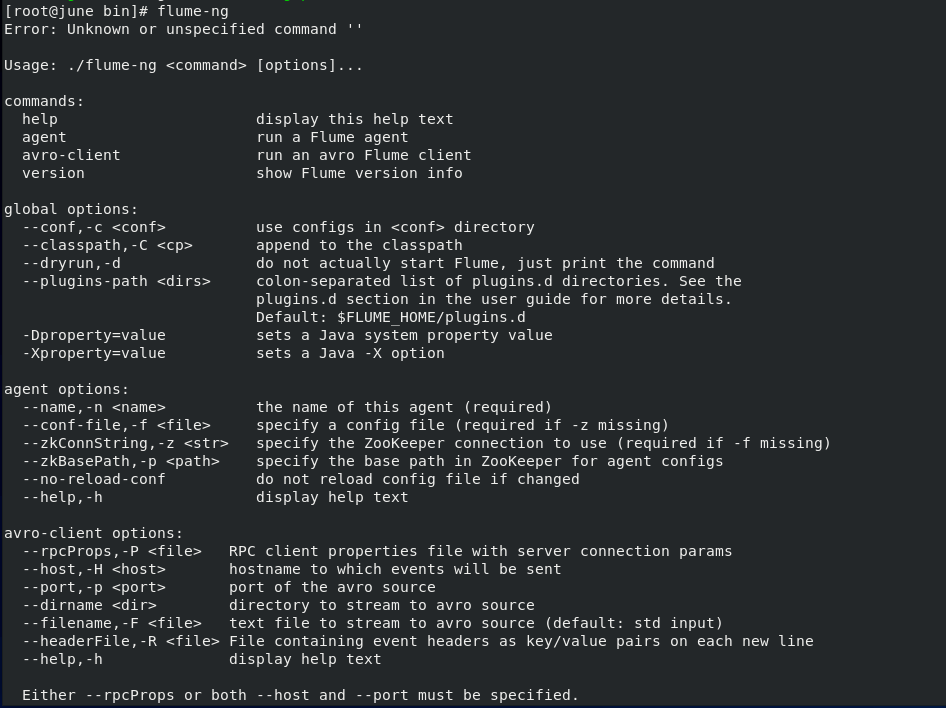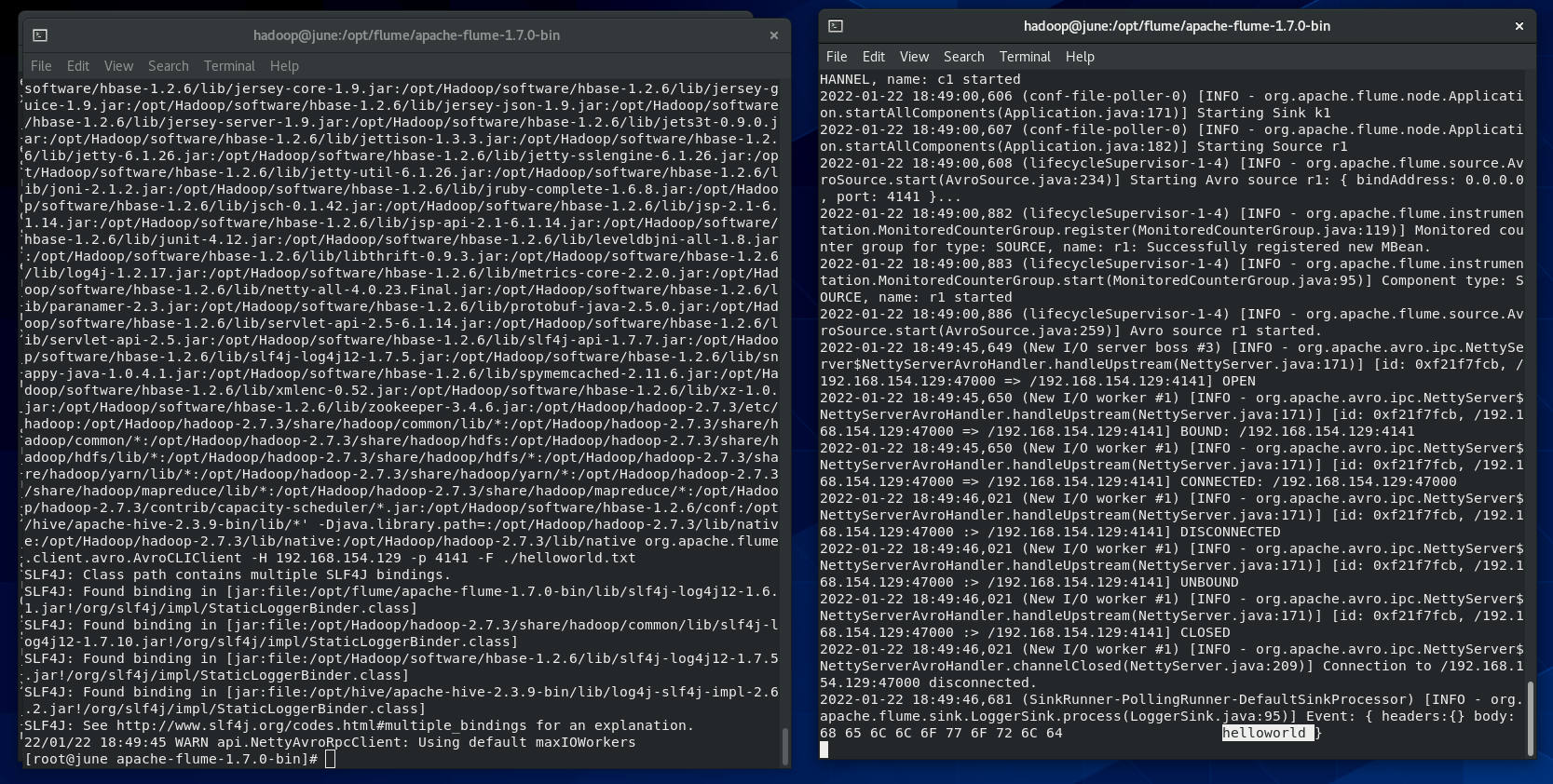Spark-寒假-实验6
1、flume安装
1)上传压缩包并解压
2)文件配置
flume-env.sh
3)启动测试
2. 使用 Avro 数据源测试 Flume
1)在flume安装目录下conf文件夹中创建文件:
zavro.conf:
2)在flume安装目录下创建helloworld.txt文件:
helloworld.txt:
3)运行(右边为第一个终端,左边为第二个终端):
在第一个终端下运行:
在第二个终端下运行:
3. 使用 netcat 数据源测试 Flume
1)创建文件
example.conf:
2)运行测试(右边为第一个终端,左边为第二个终端):
在第一个终端下运行:
在第二个终端下运行:
scala学习
Welcome to Scala 2.11.8 (Java HotSpot(TM) Client VM, Java 1.8.0_40).
Type in expressions for evaluation. Or try :help.
scala> :help
All commands can be abbreviated, e.g., :he instead of :help.
:edit <id>|<line> edit history
:help [command] print this summary or command-specific help
:history [num] show the history (optional num is commands to show)
:h? <string> search the history
:imports [name name ...] show import history, identifying sources of names
:implicits [-v] show the implicits in scope
:javap <path|class> disassemble a file or class name
:line <id>|<line> place line(s) at the end of history
:load <path> interpret lines in a file
:paste [-raw] [path] enter paste mode or paste a file
:power enable power user mode
:quit exit the interpreter
:replay [options] reset the repl and replay all previous commands
:require <path> add a jar to the classpath
:reset [options] reset the repl to its initial state, forgetting all session entries
:save <path> save replayable session to a file
:sh <command line> run a shell command (result is implicitly => List[String])
:settings <options> update compiler options, if possible; see reset
:silent disable/enable automatic printing of results
:type [-v] <expr> display the type of an expression without evaluating it
:kind [-v] <expr> display the kind of expression's type
:warnings show the suppressed warnings from the most recent line which had any
scala> :quit
__EOF__
本文链接:https://www.cnblogs.com/lx06/p/15832746.html
关于博主:评论和私信会在第一时间回复。或者直接私信我。
版权声明:本博客转载请注明出处!
声援博主:如果您觉得文章对您有帮助,可以点击文章右下角【推荐】一下。您的鼓励是博主的最大动力!










【推荐】国内首个AI IDE,深度理解中文开发场景,立即下载体验Trae
【推荐】编程新体验,更懂你的AI,立即体验豆包MarsCode编程助手
【推荐】抖音旗下AI助手豆包,你的智能百科全书,全免费不限次数
【推荐】轻量又高性能的 SSH 工具 IShell:AI 加持,快人一步
· TypeScript + Deepseek 打造卜卦网站:技术与玄学的结合
· 阿里巴巴 QwQ-32B真的超越了 DeepSeek R-1吗?
· 【译】Visual Studio 中新的强大生产力特性
· 【设计模式】告别冗长if-else语句:使用策略模式优化代码结构
· AI与.NET技术实操系列(六):基于图像分类模型对图像进行分类
2021-01-22 1月22日 学习记录